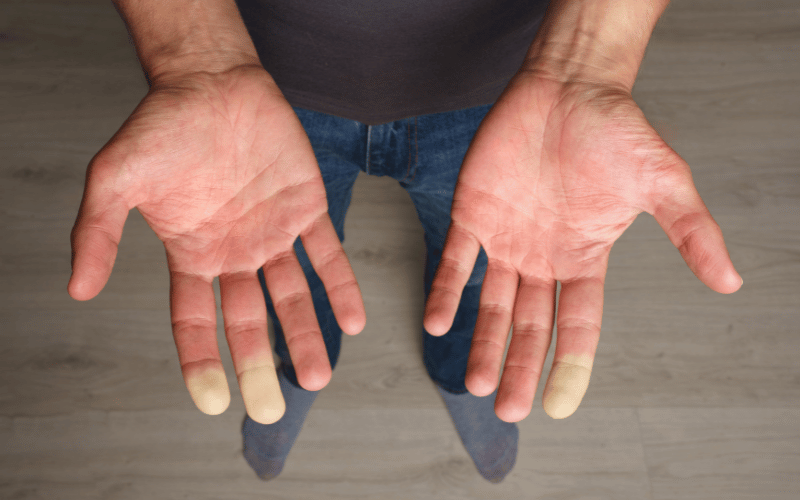8. Raynaud’s Phenomenon: Sjogren’s Icy Touch on the Extremities

For the unacquainted, Raynaud’s phenomenon might seem like a fancy term for cold fingers and toes. But in the world of Sjogren’s, it’s a complex ballet of blood vessels reacting to temperature and stress.
Picture this: fingers or toes suddenly turning white, almost ghostly, in response to a slight drop in temperature or even emotional stress. Following the pallor, they take on a bluish hue, reminiscent of the deep sea, only to turn red, flushed like ripened cherries, once the episode ends.
This isn’t a mere aesthetic change. The sequences represent blood vessels spasmodically constricting, reducing blood flow, then reopening. It’s as if they’re overreacting, putting on a dramatic show at the slightest trigger.
What’s fascinating is the interplay between Sjogren’s and Raynaud’s. While not everyone with Sjogren’s experiences this phenomenon, the connective tissue nature of both conditions hints at an intricate relationship, a dance of autoimmune complexities. (8)